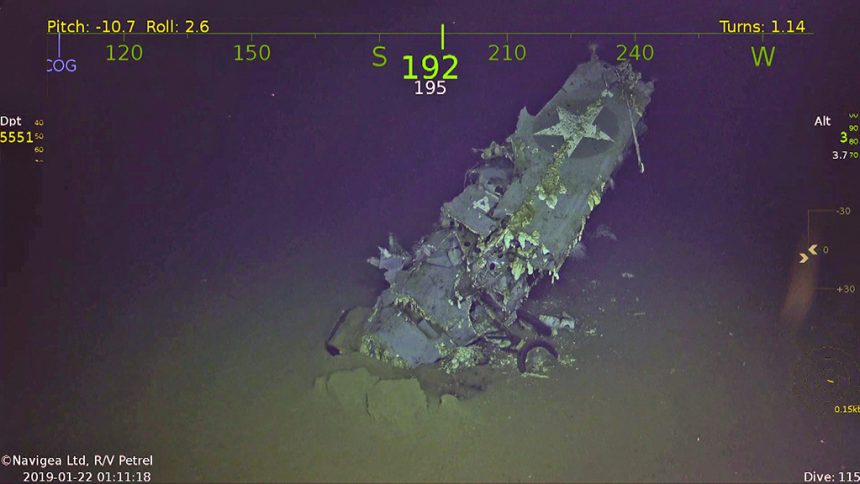Late Billionaire Paul Allen’s Expedition Ship Makes Remarkable Discovery.
In a sensational story that seems torn from a Clive Cussler fiction novel, the private research vessel funded by late billionaire Paul Allen has located the wreckage of the historic aircraft carrier USS Hornet (CV-8) resting on the bottom of the Pacific Ocean at a depth of over three miles.
The USS Hornet was a Yorktown class aircraft carrier built in 1939 that played a pivotal role in World War II in the Pacific. It was sunk during the Battle of Santa Cruz Islands in the Pacific on October 26, 1942. Approximately 140 U.S. servicemen were killed during a vicious Japanese air attack on the carrier that eventually resulted in its loss.
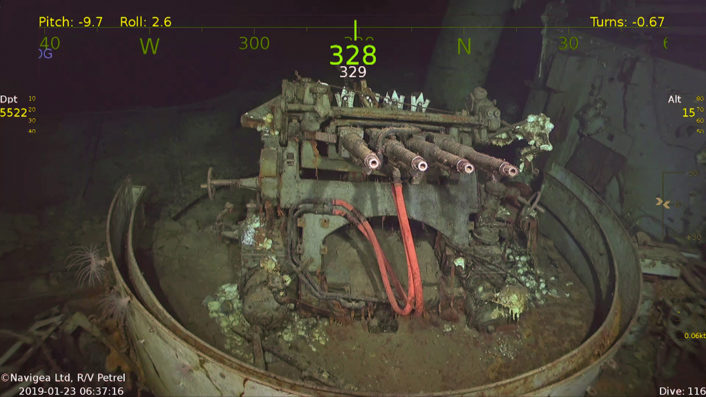
Japanese forces attacking the USS Hornet used Aichi Type D3A “Val” dive bombers dropping armor-piercing bombs and Nakajima B5N “Kate” torpedo bombers to disable the carrier. The Hornet was dead in the water with fires on its flight decks preventing aircraft operations. She was quickly put under tow by the heavy cruiser USS Northampton (CL/CA-26). During towing operations, the Japanese renewed their attacks on the crippled carrier with a flight of nine B5N “Kate” torpedo attack aircraft. Eight of the attacking “Kate” torpedo bombers were shot down, but one scored a hit that disabled key electrical systems and caused compartments onboard Hornet to flood, created a serious 14-degree list that made further towing operations impossible. Hornet was dead in the water. None other than U.S. Navy Admiral William “Bull” Halsey ordered the USS Hornet to be “scuttled” or purposely sunk after the remainder of its crew were evacuated.
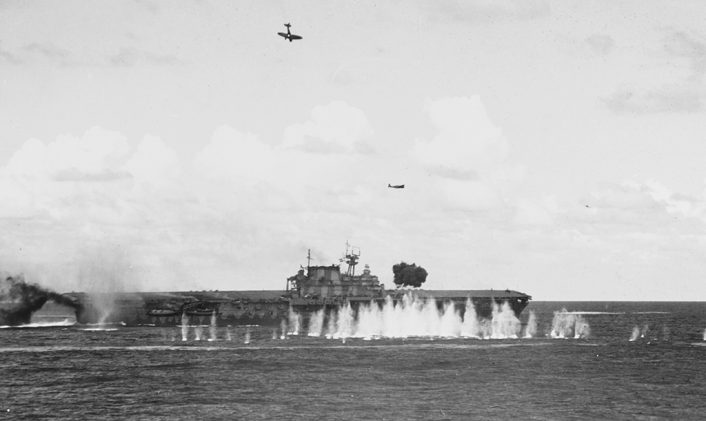
The U.S. Navy fired over 400 5-inch shells from deck guns onboard destroyers at the USS Hornet and launched nine torpedoes into her during attempts to sink her. Some of the torpedoes likely malfunctioned. Two Japanese destroyers eventually arrived in the melee’, finally sinking the Hornet with a salvo of Long Lance torpedoes.
The USS Hornet was a significant combat ship during WWII. The first U.S. airstrike on mainland Japan, the famous “Doolittle Raid” was launched from the deck of the Hornet on April 18, 1942. The USS Hornet also fought during the pivotal Battle of Midway during June 4-7, 1942. The Battle of Midway is regarded as pivotal by many historians since it was the first major naval battle contested exclusively with aircraft and fought “beyond visual range” or “BVR”.
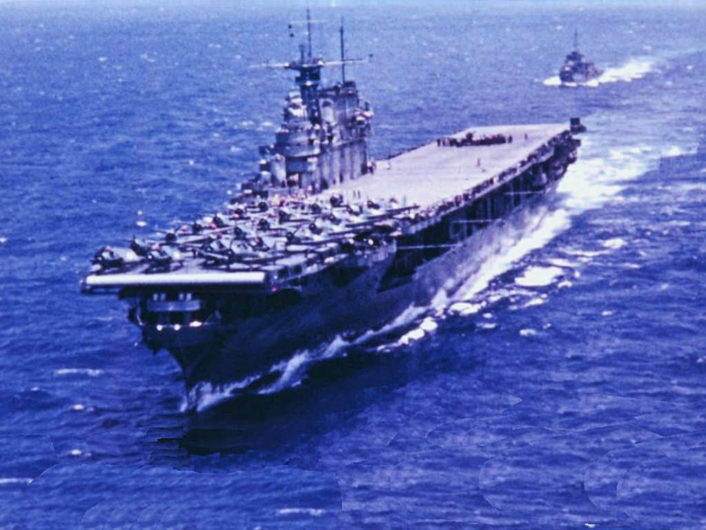
The USS Hornet wreck was discovered using a remotely piloted submersible vehicle at a depth of 17,716 feet. Advanced sonar detection equipment spotted an object roughly the shape and dimensions of the Hornet from a submerged drone. Following the sonar discovery, a larger remotely piloted submersible was launched from the research ship RV Petrel. The descent to 17,716 feet of depth, where the pressure is crushing and it is perpetually dark since no light reaches that extreme depth, took over two hours for the remotely piloted submersible.
The discovery of the USS Hornet follows several other significant wreck discoveries by Paul Allen’s crew onboard RV Petrel. On March 4, 2018, the RV Petrel crew located the submerged wreck of the aircraft carrier USS Lexington in 6,637 feet of water in the Pacific. Photos from the wreck showed some U.S. carrier based aircraft that appeared largely intact resting on the bottom.
American news network CBS embedded senior foreign correspondent Mark Phillips onboard the RV Petrel in the Pacific during the search for the USS Hornet. Phillips was onboard Petrel when the Hornet was first spotted. He managed to record the drama of the discovery unfolding for CBS news. In Phillips’ report, WWII veteran and crewmember of the USS Hornet, Richard Nowatzki, now 95, was shown video of his anti-aircraft gun position onboard the USS Hornet where he served in WWII. Nowatzki was onboard Hornet when she launched the Doolittle raid. He also survived the sinking of the Hornet. In the CBS interview, Nowatzki told Mark Phillips, “If you go down to my locker, there was $40 in it. You can have it.”
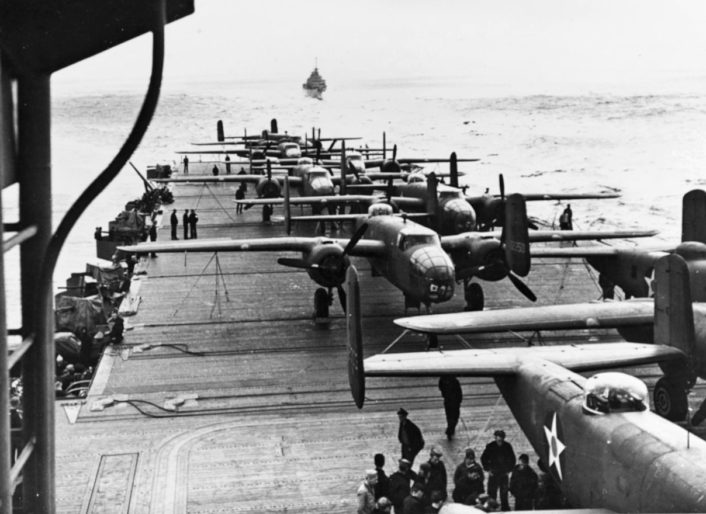
Expedition leader Robert Kraft watched the video uplink from the deep-sea submersible as it circled the wreck three miles below the surface, searching for the painted-on “8” designation on the hull to make positive identification of the USS Hornet. When Kraft spotted the markings on the wreck he said, “Oh yeah… on wow. That’s her.”
Photos taken by the remotely operated submersible showed the wreckage of a Grumman F4F Wildcat single-seat fighter aircraft on bottom near the Hornet. The aircraft’s wings were missing but the F4F was identifiable by its distinctive round landing gear opening in the fuselage.

